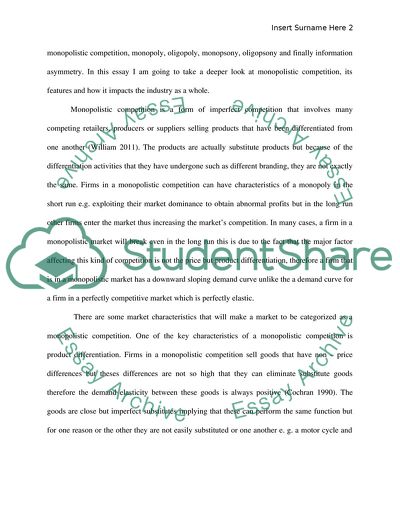Cite this document
(Monopolistic Competitive Markets Term Paper Example | Topics and Well Written Essays - 1500 words, n.d.)
Monopolistic Competitive Markets Term Paper Example | Topics and Well Written Essays - 1500 words. Retrieved from https://studentshare.org/marketing/1761999-microeconomics-competition
Monopolistic Competitive Markets Term Paper Example | Topics and Well Written Essays - 1500 words. Retrieved from https://studentshare.org/marketing/1761999-microeconomics-competition
(Monopolistic Competitive Markets Term Paper Example | Topics and Well Written Essays - 1500 Words)
Monopolistic Competitive Markets Term Paper Example | Topics and Well Written Essays - 1500 Words. https://studentshare.org/marketing/1761999-microeconomics-competition.
Monopolistic Competitive Markets Term Paper Example | Topics and Well Written Essays - 1500 Words. https://studentshare.org/marketing/1761999-microeconomics-competition.
“Monopolistic Competitive Markets Term Paper Example | Topics and Well Written Essays - 1500 Words”, n.d. https://studentshare.org/marketing/1761999-microeconomics-competition.


